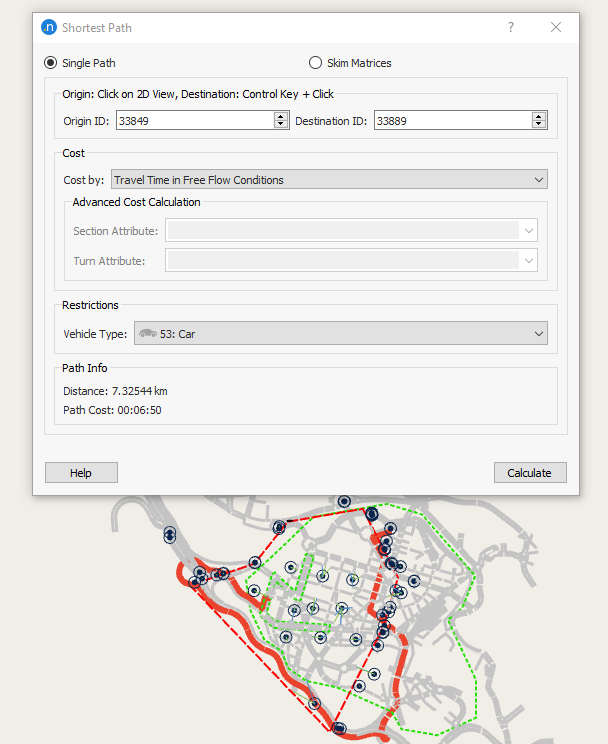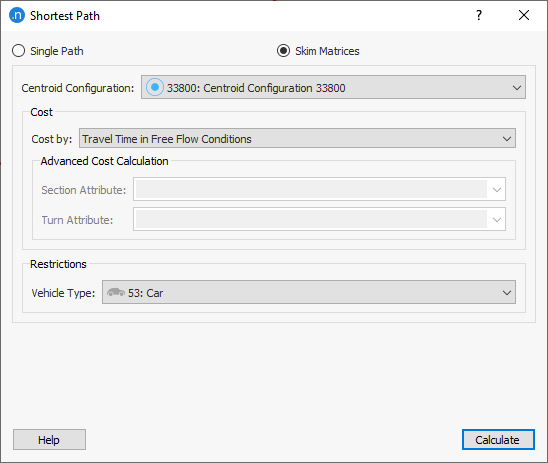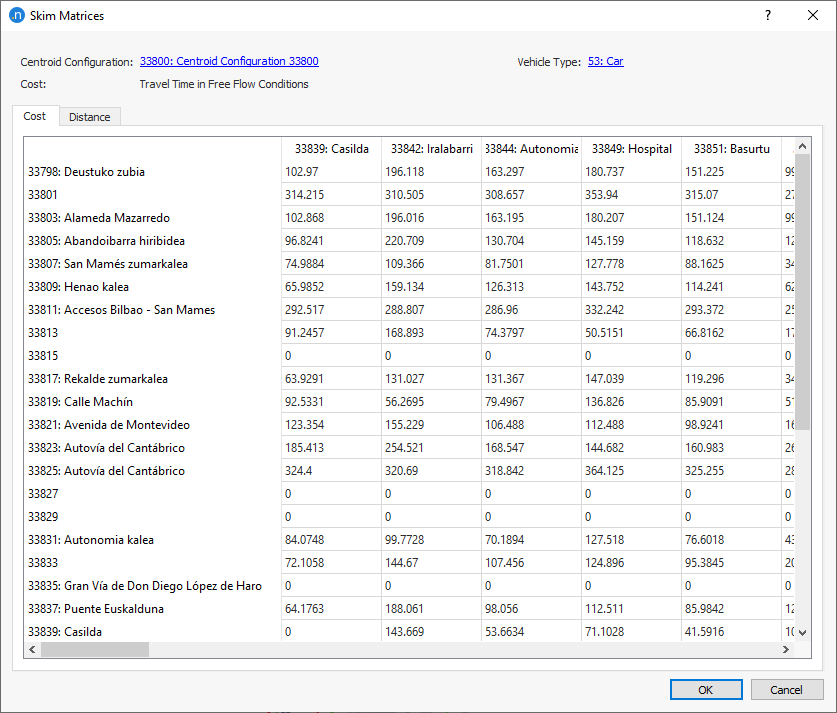Shortest Path¶
The Shortest Path Calculator tool is available in the menu Data Analysis/Shortest Path Calculator.
The Shortest Path Calculator can calculate:
- Single Path: a single shortest path for a given Origin - Destination pair that can be either centroids or sections of the network.
- Skim Matrices: skim matrices, one with in each cell the length of the least cost path between that OD pair, and another with in each cell the cost of the least cost path between that OD pair.
Single Path¶
To start, the origin section or centroid must be selected, by clicking on it in the view. The destination section or centroid is chosen by clicking on it while holding the Ctrl key pressed. Another option is to enter the ID of the desired object directly in the text box.
The dialog has three options for the criteria to calculate the shortest path: by distance, by time and by attribute. Note that the calculation of a Shortest Path basing on Time takes into account the free flow times to go through sections and nodes. If the Attribute option is chosen, then the user must select the section attribute and the turn attribute on which the shortest path will be calculated.
The restrictions box is used to specify the vehicle type for the shortest path, so that the reserved lanes not allowed for that type are not taken into account.
Finally, the Shortest Path, if any, is shown in the view in the primary color and the cost of the path is also shown in the dialog window.

Skim Matrices¶
To start, select a centroid configuration (it can be for the full model or a subnetwork).
The cost and restrictions are equal as in the Single Path option (explained above)
When Calculate is pressed, two matrices will be calculated: one with distance and one with cost. If the selected cost is Distance, only one matrix will be generated. For all other cases two matrices are generated: Cost and Distance. If there is no path possible, the value for that cell is 0. If the origin and destination centroids are the same (the diagonal of the matrix) the value for that cell is 0. In particular, for ODs that have no path connecting them, the value for that cell is set to 0.
To save the Skim Matrices press OK in that dialog. If you press Cancel the matrices are not saved. A log with a link to the matrices is generated in the log window.
The name of the skim matrices includes what cost was used and what scenario and experiment were active (geometry configurations and attribute overrides were taken into account in the computation).

